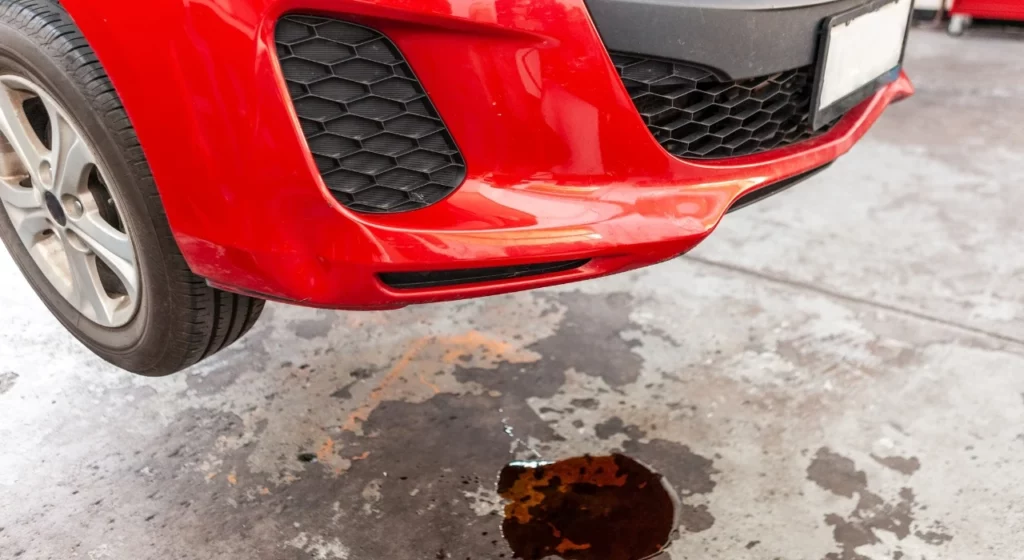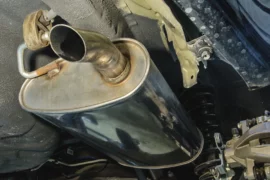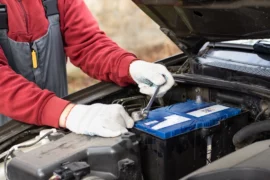Finding any liquid under your car could be frightening, especially if it is brilliant red. If you’ve seen crimson fluid seeping from your car, it usually indicates anything is wrong, most often connected to your power steering or transmission systems. Ignoring a small spot could cause costly damage or even road breakdowns, hence it is important, even if it does not.
In this article, we will discuss what red liquid usually means, how to find the source, driving with a leak, and the next actions to be taken in this comprehensive guide. We’ll also go over preventative advice and when to contact a mechanic to prevent red fluid from leaking from car.
What is the Red Fluid Coming from Your Car?
Noticing red fluid under your car can be alarming, especially if you’re unsure where it’s coming from. Identifying the type and source of the leak is crucial to prevent further damage and costly repairs. Vehicles often use the most prevalent crimson fluids, including:
- Automatic Transmission Fluid (ATF)
- Power Steering Fluid in Certain Vehicles
- Rare circumstances – depending on the formulation, coolant or antifreeze
Maintaining your car’s smooth operation depends on each of these liquids. A leak suggests that a seal, hose, or gasket has probably given out, and the fluid is leaking instead of circulating correctly throughout its system.
Also Read: Explore Which 2025 Oil Is More Affordable Valvoline Or Mobil 1
Identifying the Source of the Leak
Before you can fix any fluid leak in your car, it’s essential to identify exactly where it’s coming from. Pinpointing the source helps determine the severity of the issue and guides the necessary repair steps. These guidelines will assist you in identifying the source of the leak:
1. Look for consistency and hue
- Bright red, a little oily
- Most likely automatic transmission fluid
- It could be power steering fluid
- Reddish and scented
2. Location of the Leak
- Center of the car: Probably transmission fluid beneath the engine/gearbox area.
- Left front/right: perhaps power steering fluid near wheels or steering rack.
- Rear of the engine compartment: Might be a coolant leak
3. Determine the levels of fluid
Check the fluid levels with your car’s dipsticks or reservoirs. A low reading is a sure sign of a leak.
Suggestion: See Why Leaked Feedback Says The RAV4 May Beat The CR‑V.
Common Causes of Red Fluid Leaks
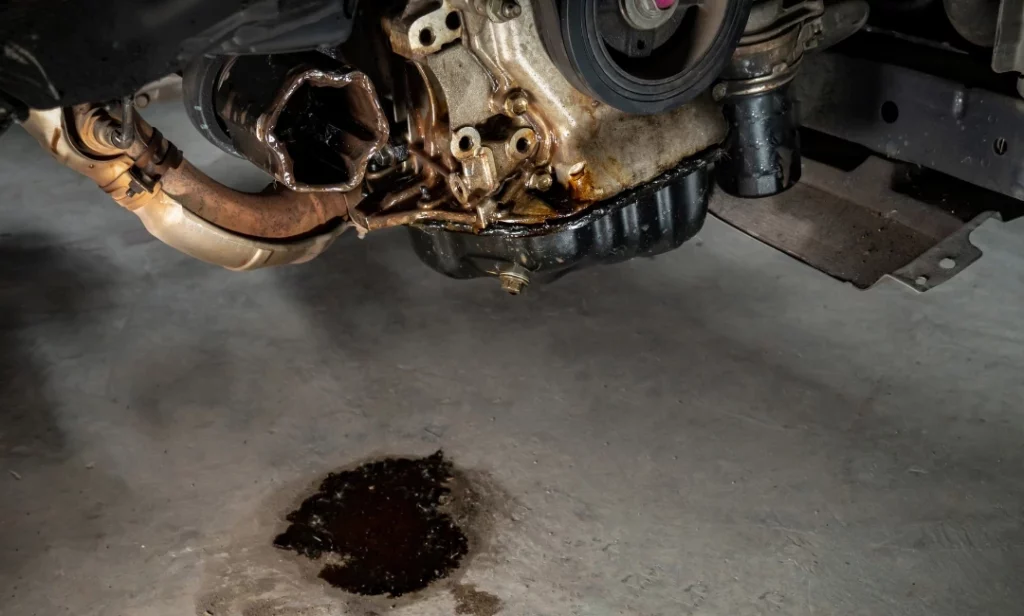
Noticing red fluid under your car can be alarming, but identifying the source is the first step to resolving the issue. Let’s explore the most common causes behind these red fluid leaks and what they might indicate about your vehicle’s condition. Below are the common causes of red fluid leaks:
1. Worn gearbox pan gaskets
The gasket sealing the transmission fluid pan may crack or become brittle over time, therefore letting ATF leak out.
2. Broken or Damaged Transmission Cooler Lines
These pipes enable transmission fluid to travel between the radiator and transmission. Leaks can result from corrosion or fractures.
3. Leaking power steering hose or pump
Should your automobile run red power steering fluid, a leak from the high-pressure hose, low-pressure return hose, or pump may be the cause.
4. Damaged Seals
Seals are used by transmission and steering systems to contain fluid. Fluid loss may result from a steering rack seal or an impaired input/output shaft seal.
5. Red dye coolant
Some coolant companies use red or pink dyes. A leaking radiator hose, heater core, or reservoir tank may appear similar to a transmission fluid leak.
You May Also Like: See Jeffrey Oliver’s Top Racing Achievements And Standout Highlights.
Is It Safe to Drive With Red Fluid Leaking?
No, driving with any sort of fluid leak, especially if transmission or steering fluid is present, is not advised in most circumstances. Here is why:
- Gear slippage, overheating, or total transmission breakdown can all result from loss of transmission fluid.
- Low power steering fluid causes rigid or jerky steering, therefore raising accident danger.
- If wrongly recognized, leaking coolant might cause engine overheating and expensive maintenance.
Driving with a leak not only further harms your car but also endangers your safety. Getting the problem diagnosed and fixed as soon as possible is preferable.
What to Do If You See Red Fluid Under Your Car?
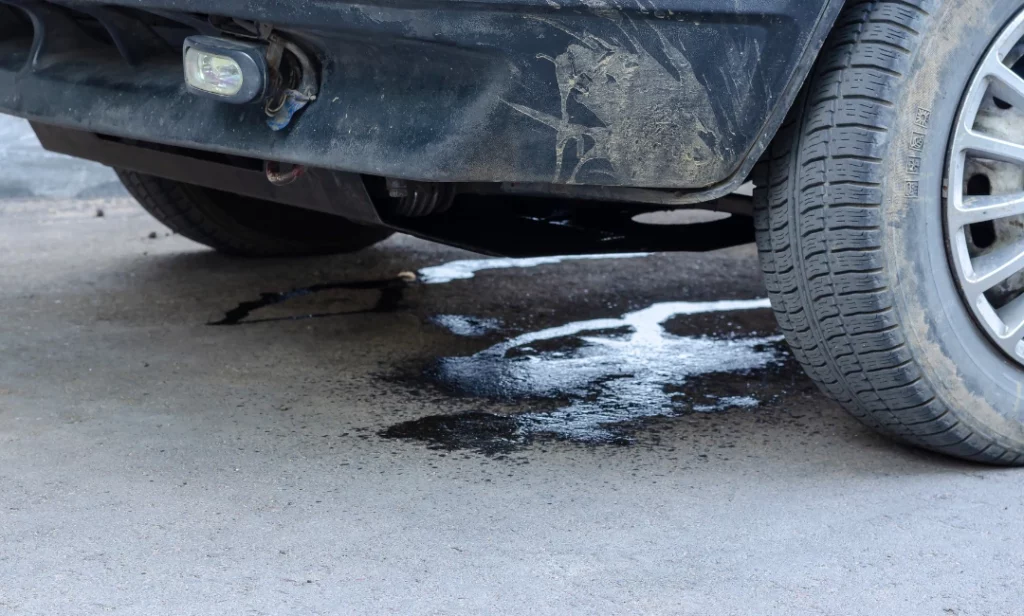
Noticing red fluid under your car can be alarming, but it’s often a critical sign that shouldn’t be ignored. Understanding what this fluid is and where it’s coming from can help you act quickly and prevent serious damage. Below are the steps to check if there is red fluid under your car:
Step 1: Don’t Panic
Although it should never be overlooked, a leak does not always imply disastrous damage.
Step 2: Mark the leak Area
To determine how much fluid is leaking and from where, leave a cardboard or newspaper beneath your automobile overnight.
Step 3: Check Fluid Levels
Check your power steering or transmission fluid level using the dipstick or reservoir caps.
Step 4:Book a Diagnosis
See a respected mechanic to pin down the exact reason. Usually much simpler (and less expensive) to repair a leak discovered early.
Also Check: Whole Set Belts Keep Your Eco Car Running Smoothly.
Repair Options for Red Fluid Leaks
Once you’ve identified a red fluid leak under your car, the next step is deciding how to fix it. Depending on the source and severity of the leak, repair options can vary from simple fixes to more complex mechanical work. Let’s see the repair options for red fluid leaks:
1. Repair of Transmission Fluid Leaks
- Replacing the pan gasket is rather simple if it’s dripping.
- Damaged seals around cooler lines or shafts could require some transmission removal.
- Cracked or corroded lines can be exchanged for fresh ones.
2. Strength Steering Leaks Repairs
- Leaks in pressure hoses are rather frequent and inexpensive to fix.
- If the leak is from the pump, the technician might advise a seal kit or pump replacement.
3. Repair of Coolant Systems
- Should coolant be the source of the problem, changing a leaking radiator or damaged hoses could be required.
- Depending on the make and model of your car, repairs might run from under ₹1,000 for a simple hose fix to ₹15,000 or more for significant transmission work.
Related: The Truth About Clutches In Automatic Cars Explained Clearly.
Preventing Red Fluid Leaks
Especially for fluid leaks, prevention is always preferable to cure. You could minimize the risk as follows:
- Regular servicing is essential. Scheduled maintenance checks can detect leaks early.
- Regularly check under your vehicle, especially after extended trips or off-road driving.
- Change fluid on time; degraded seals result from old fluid.
- Search for odd noises. A whining or grinding noise could point to low fluid levels.
- Avoid harsh driving practices. Sudden acceleration or continuous gear changes strain hoses and seals.
When to See a Mechanic?
Don’t wait if you’re not sure whether the red fluid is transmission fluid, steering fluid, or coolant. Driving with a red fluid leak, no matter how little, can quickly become significant engine or transmission problems; therefore, a professional diagnosis is imperative.
Look for auto repair companies that are experts in diagnostics and have experience handling leaks. Your chances of a rapid and cheap repair improve the sooner you act.
Conclusion
More than merely a mark on your driveway, a red fluid leaking from car is your car’s way of alerting you to something needing work. Whether it’s automatic transmission fluid, power steering fluid, or even dyed coolant, each contributes significantly to maintaining your car running effectively and safely.
Regular car maintenance and inspections are the first line of defense against these problems. If you’re local and need professional assistance, search for nearby experts. Although these might not immediately stop fluid leaks, frequent inspections and servicing can help detect several problems early, including those causing hazardous leaks.
FAQ’s
1. What is the most common red fluid that leaks from a car?
The most often seen red fluid leaking from a car is automatic transmission fluid. It plays a critical role in gear shifting, lubrication, and cooling of the transmission system. A leak could lead to poor transmission performance and potential long-term damage if left unchecked.
2. Is it safe to drive with red fluid leaking from my car?
No, it is dangerous. Unsafe driving circumstances and mechanical failure can result from leaking transmission or power steering fluid. A sudden drop in fluid levels can lead to gear slippage, overheating, or loss of steering control. It’s best to stop driving and have the issue diagnosed by a professional immediately.
3. Can coolant ever appear red?
Yes, depending on the brand and recipe, some coolants may be red or pink. However, compared to ATF, they normally have a sweet scent and feel less oily. Red coolant is often used in vehicles with extended-life antifreeze formulas. Still, mistaking it for transmission fluid can lead to misdiagnosis of the problem.
4. How much does it cost to fix a red fluid leak?
From a few hundred rupees for a hose replacement to more than ₹15,000 for serious transmission repairs, costs range greatly. The total cost depends on the leak source, labor charges, and whether major components are affected. Timely inspection can reduce repair bills and prevent further mechanical issues.

